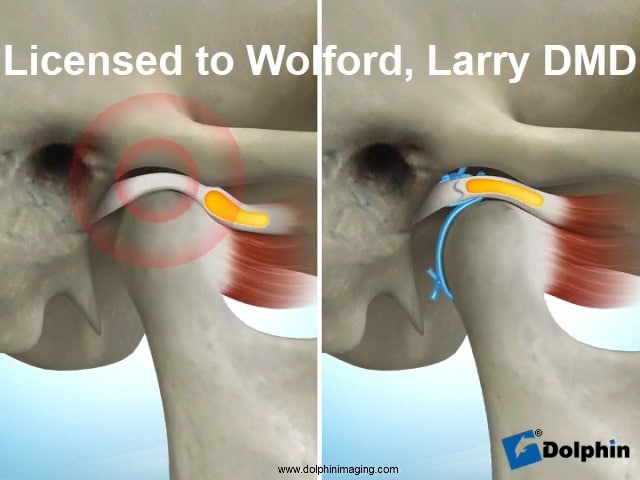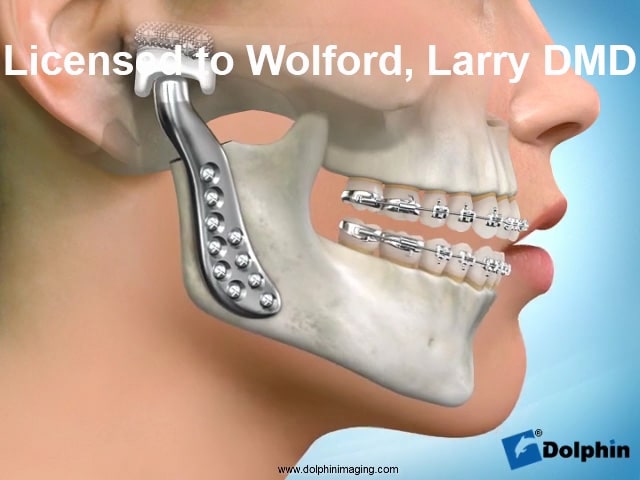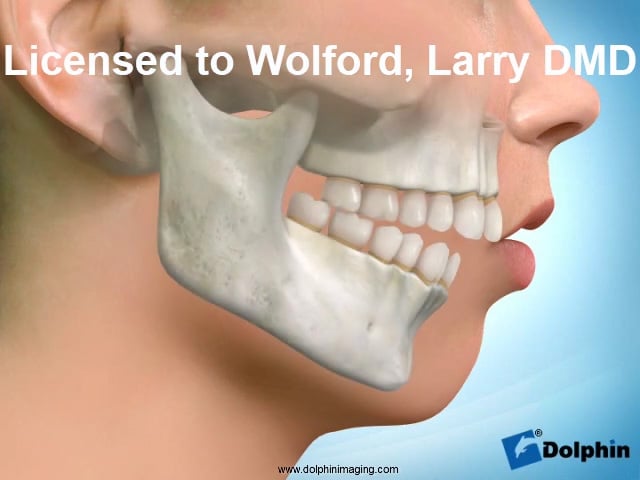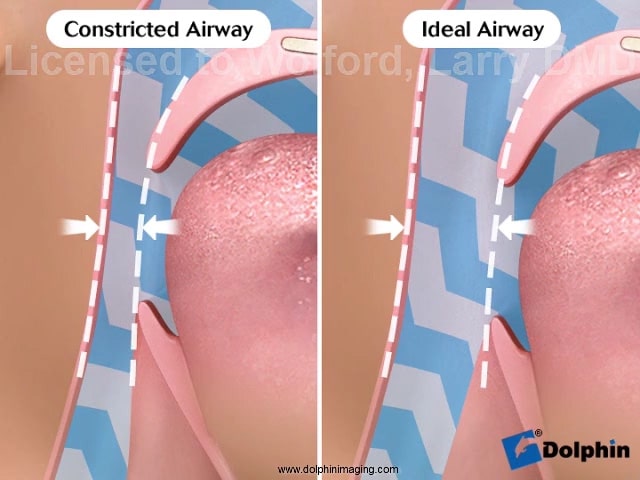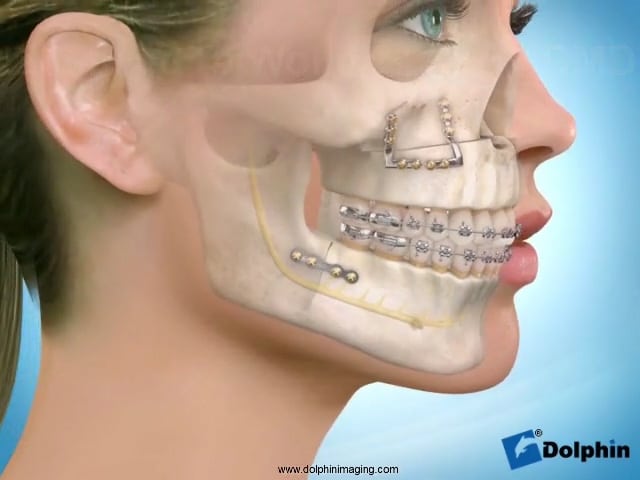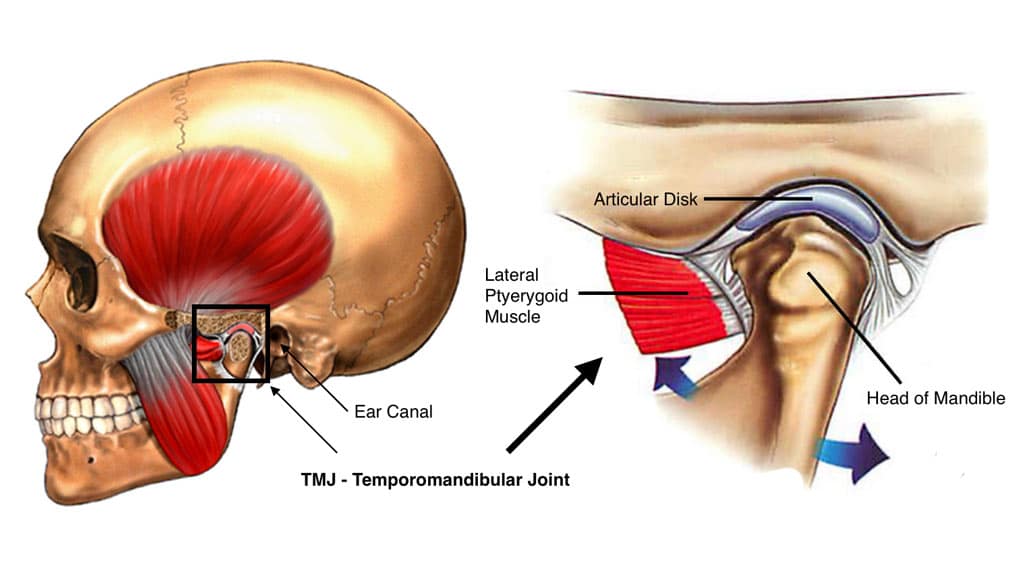Temporomandibular joint disorders (TMJ Dysfunction) and jaw muscle disorders present dysfunction and pain in the jaw joint and the muscles that control jaw movement.
If this pain does not eventually go away, it can develop into long-term symptoms, at which time it is important to seek treatment from a TMJ specialist like Dr. Larry Wolford.
The temporomandibular joint (TMJ) is the hinge between the upper jaw (maxilla) and lower jaw (mandible) that allows movement of the lower jaw to facilitate eating, chewing, speech, breathing, etc. TMJ pathology can create jaw dysfunction, noises, dentofacial deformities, pain and headaches. Surgery may be required to correct associated TMJ problems.
Who benefits from
TMJ Surgery?
There are many different kinds of problems that can affect the TMJ. Since many of the TMJ disorders can progressively worsen, early diagnosis and management can prevent progressive disease. Some TMJ disorders create few obvious symptoms, but many patients with TMJ problems may have one or more of the following symptoms:
- Clicking, popping, or grinding noises with jaw movement
- TMJ pain & Headaches
- Pain through the jaws and jaw muscles
- Pain down through the neck, shoulders, and back
- Earaches & Ringing in the ears
- Lightheadedness / dizziness
- Changes in occlusion (fit of the teeth and jaws)
- Changes in facial appearance
- Jaw dysfunction such as limited ability to open the jaws and loss of side to side movement
- Significant changes in the diet with tendency toward a more soft to liquid diet
It is important to understand that TMJ pathology often creates or co-exits with jaw and facial deformities. For patients with co-existing TMJ problems and jaw deformities, correcting just the jaw position and ignoring the TMJ problems, may result in poor outcomes relative to jaw function, esthetics, jaw position, stability and increased pain and headache levels.
TMJ Dysfunction & TMJ Disorders
Therefore, addressing the TMJs, as well as the orthognathic surgical aspects, usually provides the best possible outcome. Dr. Wolford developed the treatment protocols that permit correction of TMJ pathology and dentofacial deformities in one operation to provide high quality outcomes. Some of the more common.
Some of the More Common
TMJ Temporomandibular Joint Pathologies
Displaced Articular Disc
The most common TMJ disorder is a displaced disc in the joint. This can cause any or all of the above listed symptoms. Dr. Wolford has developed treatment methods to treat this problem, and aid in improving jaw function and decrease or eliminate symptoms. The treatment may require the use of a Mitek Anchor with artificial ligaments to stabilize the disc in the proper position.
Adolescent Internal Condylar Resorption (Cheerleader Syndrome)
This condition affects predominantly teenage females but can also affect teenage males (9:1 female to male ratio). This condition usually develops during pubertal growth (ages 11 to 15) and involves a displaced TMJ disc. In addition, the condyles of the lower jaw begin to dissolve away causing the lower jaw to slowly become more retruded and the teeth to come apart in the front. Dr. Wolford has developed a treatment protocol for this problem that is highly predictable in treatment outcomes, and it is the only technique currently available that will allow correction of the TMJ pathology by repositioning the disc (this arrests the disease process) as well as correction of the dentofacial deformity in one operation.
Condylar Hyperplasia (Mandibular Prognathism)
In this condition the lower jaw overgrows in a forward direction and off to one side, creating significant facial deformity. This TMJ dysfunction is caused by overgrowth of the lower jaw condyle. The growth problem usually becomes evident, or significantly worsens during pubertal growth. Dr. Wolford has developed a highly predictable treatment protocol to treat this particular problem and eliminate the abnormal excessive growth of the lower jaw as well as establish good facial balance and jaw function.
Osteochondroma
This pathological process is a benign tumor of the lower jaw condyle, which causes overgrowth and overdevelopment of one side of the lower jaw and face, generally creating significant facial asymmetry. It can occur anytime during life but more commonly in the teenage years. Dr. Wolford has developed a protocol to treat this particular problem and eliminate the pathology as well as re-establish good facial symmetry and function.
End-stage TMJ – Temporomandibular Joint Disease
These diseases include such pathologies as: Multiply operated joints, ankylosis, connective tissue autoimmune disease (i.e. rheumatoid arthritis, juvenile idiopathic arthritis, psoriatic arthritis, lupus, scleroderma, Sjogren’s syndrome, ankylosing spondylitis, severe trauma destroying the joints, reactive arthritis, failed previous autogenous grafts (patient’s own tissue) or alloplastic implants (artificial materials), etc. For these pathological conditions, a total joint prosthesis may be the best treatment as well as orthognathic surgery to correct an associated jaw deformity.
Read Dr. Wolford’s comprehensive article on total temporomandibular joint (TMJ) replacement which entails surgical replacement of the TMJ with a total joint prostheses as well as orthognathic surgery.
Please contact Dr. Larry Wolford’s office using our online contact form or call 214.828.9115 if you would like to schedule an appointment.
Featured TMJ Videos
